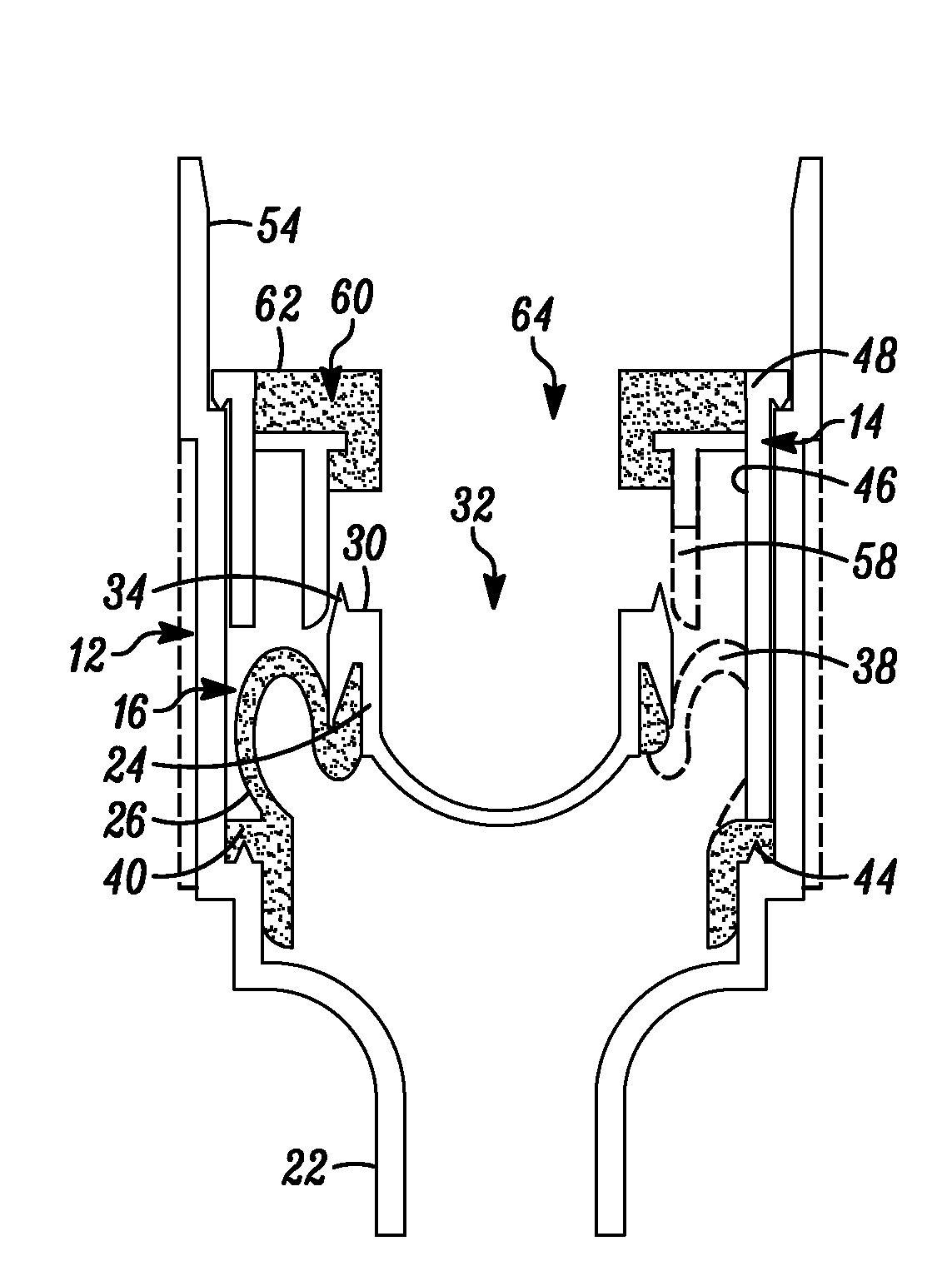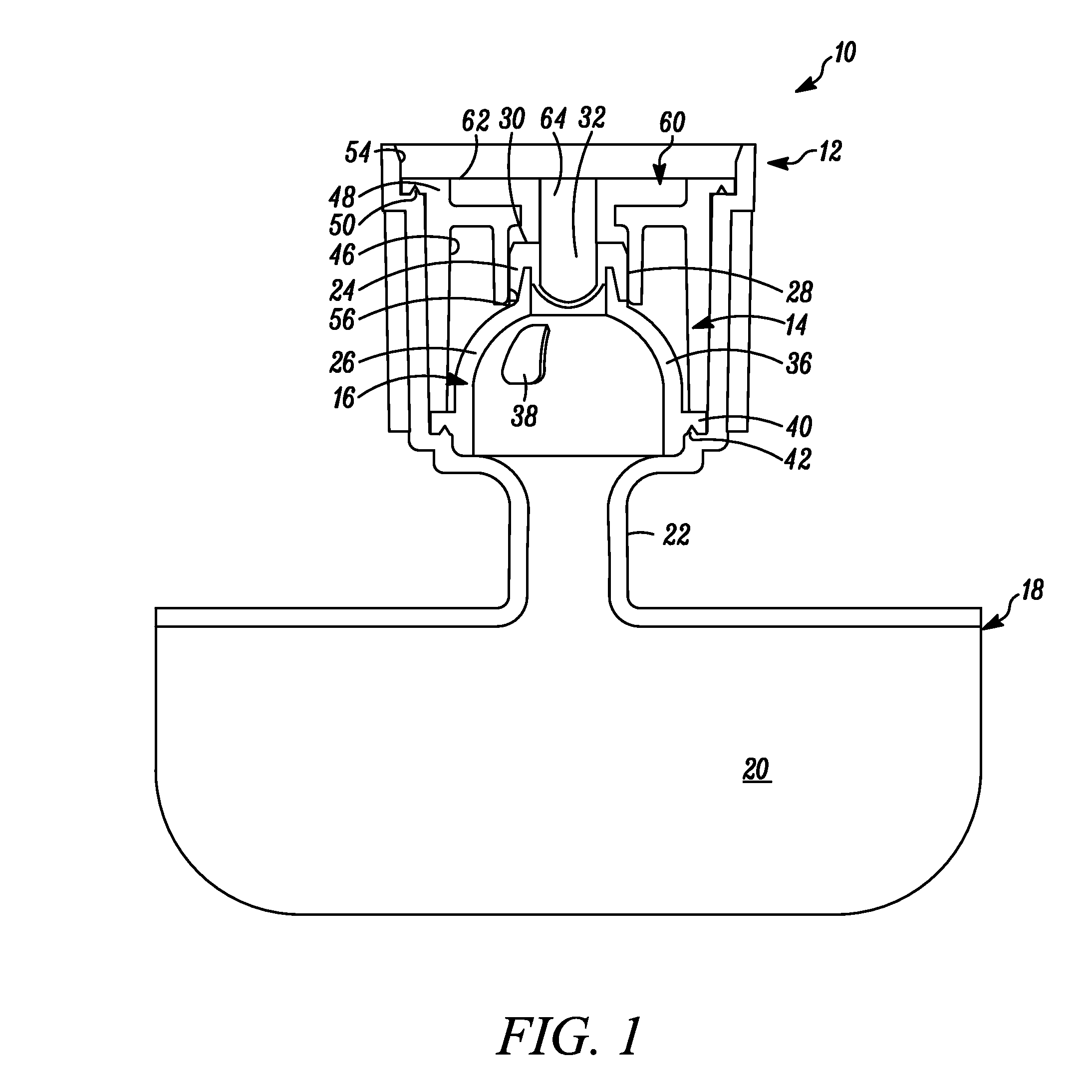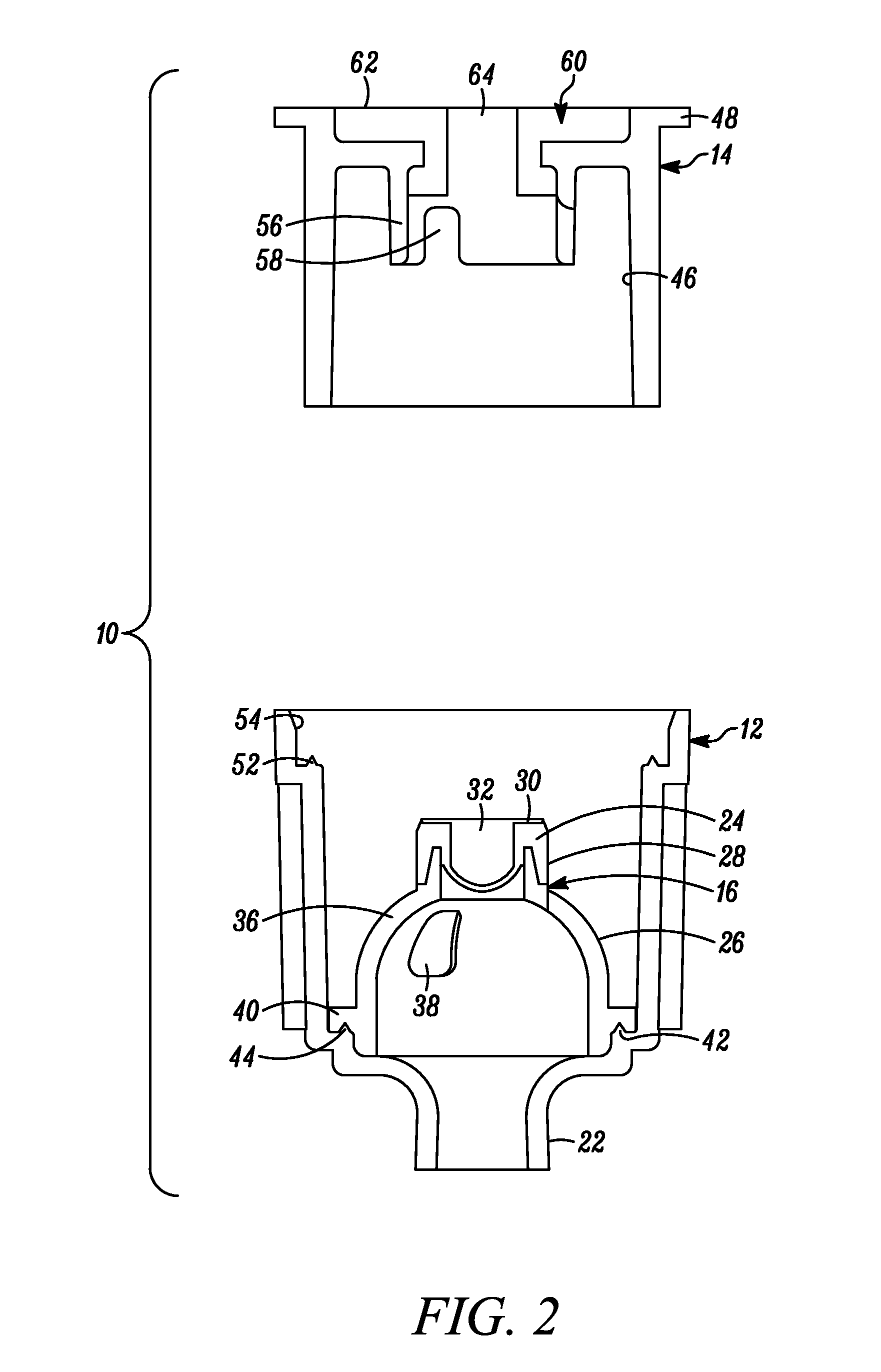Device for connecting or filling and method
a technology of connecting or filling devices and connectors, applied in the direction of couplings, packaging goods types, transportation and packaging, etc., can solve the problems of interior of the cannula or probe, can be exposed to the ambient atmosphere, and typical controlled environments
- Summary
- Abstract
- Description
- Claims
- Application Information
AI Technical Summary
Benefits of technology
Problems solved by technology
Method used
Image
Examples
Embodiment Construction
[0069]In FIG. 1 a valve is indicated generally by the reference numeral 10. The valve 10 comprises a shell 12, a flexible valve member 16 sealingly mounted within the shell 12 and a valve body 14 mounted atop the flexible valve member 16 within the shell 12, as explained further below. In some embodiments, the shell 12 is made of a polymeric or thermoplastic material such as polypropylene (PP) or high-density polyethylene (HDPE). However, as may be recognized by those of ordinary skill in the pertinent art based on the teachings herein, the shell may be made of any of numerous different materials that are currently known or that later become known. The valve 10 is connected, at a bottom end thereof, in fluid communication with a container 18, defining a storage chamber 20 therein, via a neck 22. In the illustrated embodiment, the container 18 is a pouch. However, as may be recognized by those of ordinary skill in the pertinent art based on the teachings herein, the container may def...
PUM
| Property | Measurement | Unit |
|---|---|---|
| flexible | aaaaa | aaaaa |
| elastic | aaaaa | aaaaa |
| thickness | aaaaa | aaaaa |
Abstract
Description
Claims
Application Information
 Login to View More
Login to View More - R&D
- Intellectual Property
- Life Sciences
- Materials
- Tech Scout
- Unparalleled Data Quality
- Higher Quality Content
- 60% Fewer Hallucinations
Browse by: Latest US Patents, China's latest patents, Technical Efficacy Thesaurus, Application Domain, Technology Topic, Popular Technical Reports.
© 2025 PatSnap. All rights reserved.Legal|Privacy policy|Modern Slavery Act Transparency Statement|Sitemap|About US| Contact US: help@patsnap.com



